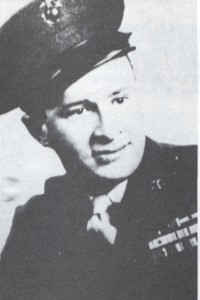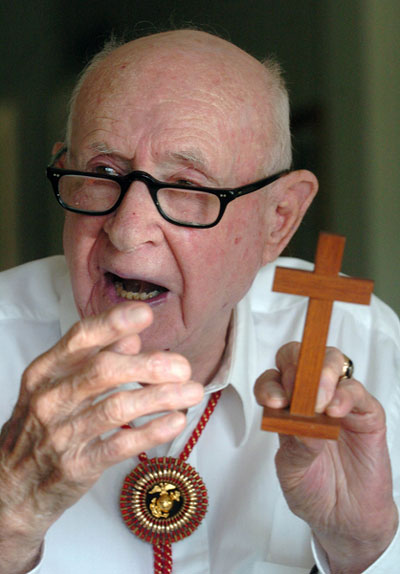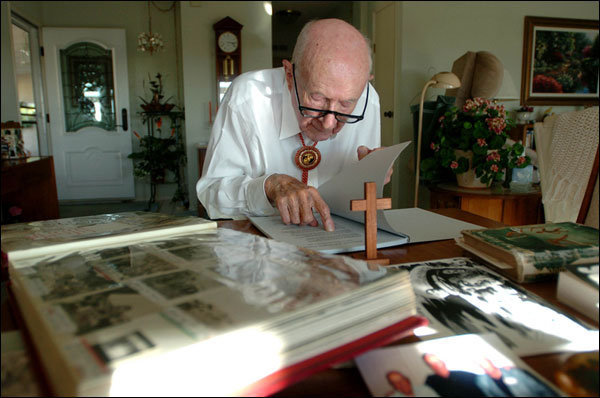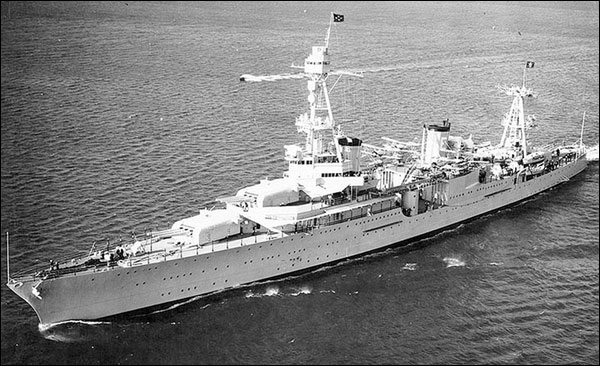
Veteran of the River Kwai: San Marcos man among survivors in book about
lost USS Houston
The old warrior needs a little help these days, slowed by a stroke
two years ago that has left him with staccato speech and dependent on a
wheelchair.
But San Marcos resident Lloyd Willey's eyes are
still clear and his memory still sharp as he picks up a photo from three
years ago that shows him with two other gentlemen.
"Three ... out ... of ... 75," Willey says, holding up three fingers.
Out of 75 Marines aboard the USS Houston, sunk in a battle with a
Japanese fleet on Feb. 28, 1942, only three survive today. Of the 1,064
total crew members aboard the Houston, two-thirds perished.
Those who survived the sinking of the ship would face one of the darkest
ordeals of any American prisoners of war in World War II: the
construction of a 260-mile railroad between Ban Pong, Thailand, and
Thanbyuzayat, Burma.
In popular culture, their story is
mostly known from the movie "The Bridge Over the River Kwai," the 1957
film generally regarded as inaccurate by veterans and historians. They
have another name for the project: the Burma-Thailand Death Railway.
"The British in the 1800s had surveyed that route and decided it was too
dangerous and would take five years," said writer James Hornfischer
about the railway.
"The POWs completed it in about a year,
with the death of about 16,000 of their number, mainly British, Dutch
and Australian. The number of Americans was about 400."
Including native slaves who worked on the railway, the total death toll
might have been nearly 200,000 in one year, he said.
Willey,
92, was one of 20 veterans of the USS Houston interviewed by Hornfischer
for his book, "Ship of Ghosts" ($26, Bantam). The interview was done
before his stroke.
While many people have heard of the
railway and the bridge over Kwai, the story of the USS Houston is
largely unknown. Hornfischer, a literary agent in Austin, Texas, and
author of "The Last Stand of the Tin Can Sailors," said despite having a
vast knowledge of the Pacific theater in World War II, he did not know
about the ship himself until a historian friend mentioned it over lunch.
The cruiser, launched in 1929 and a favorite of President Roosevelt, was
lost in an epic sea battle, its fate unknown until the war's end. The
book's title is taken from a headline that asked, "Where is the crew of
the ghost cruiser Houston?"
"That night, the Houston and the
Australian cruiser the Perth were trying to get the heck out of Dodge,"
Hornfischer said.
The ships were part of the Allied fleet
that had fought in the Battle of Java Sea the previous night. The Allies
had been looking for a Japanese fleet for weeks when the two lone ships
had the misfortune of stumbling upon them.
"They went up
against an entire amphibious operation in full swing," Hornfischer said.
The two ships faced 56 Japanese transport ships escorted by three
cruisers and three squadrons of destroyers.
"They met a
hero's end that night, going down with guns blazing," he said.
Nobody knew the ships had been sunk, and reports from "Tokyo Rose" about
the Houston's sinking were ignored because the Japanese had falsely
bragged several times in the past that they had sunk the president's
favorite ship.
"They were ghosts for 3 1/2 years,"
Hornfischer said of the survivors. "Nobody knew whether they were dead
or alive."
Survivors were put to work on the railway. Unlike
the movie, which showed British laborers taking pride in building the
bridge, the actual workers did everything they could to sabotage the
railway and were treated much worse by their captors than in the film.
Willey is quoted several times in the book, which shows his memory is so
sharp that he recalled the tone of the bugler as he blew the call to
abandon ship.
"It would have been absolutely beautiful, if it
had been anywhere else but at that time," Willey said in the book.
In the book, Willey also describes how the ship's chaplain repeatedly
tried to give his life vest to a younger man. Finally, he convinced him
to take it. The chaplain, 59, disappeared into the sea.
Many
of the survivors were put to work building the railway through the
jungle by hand, using picks and shovels. Working 12 to 16 hours a day,
the men were often beaten and starved, and fell prey to jungle diseases.
They also were tormented by the Kempeitai, the Japanese secret police.
Willey told Hornfischer about seeing the "Kempeis" take some Indian
prisoners into the jungle, bury them up to their necks and douse their
heads with sugary syrup to attract carnivorous insects. He also
described watching Japanese guards beat an Australian prisoner to death
and drag his body by rope through their camp because he had struck a
guard.
Hornfischer said Willey was more open than many
veterans in telling of the atrocities he witnessed, but it wasn't the
stories of torture he remembered from him as much as the poetry Willey
wrote as a captive.
"Lloyd really stands apart from the rest
of those tough, oversized Marines," Hornfischer said. "Lloyd was the
literary voice of the Houston's Marine detachment. I think writing
poetry was the way he processed the experience and maybe coped with it,
and maybe even transcended it. The fact that he was able to compose
poetry under these conditions, I think says a lot about the human
spirit."
Among Willey's albums bulging with letters,
newspaper clips and commendations is a tattered booklet filled with his
handwritten poems. For three years as a POW, Willey hid the book from
his captors by burying it, stashing it in the ceiling and even sewing it
into the bottom of his barracks bag.
"All through the years
ahead of us, we'll give a thought or two
"To the fighting
ship we battled on, and to her fighting crew.
"Maybe at
conventions, or talking with old friends,
"We'll trace her
record from the start, to where her story ends.
"She had a
suicidal mission, without adequate air-support,
"And nine
deadly eight-inch guns, her main and last resort."
-- Opening
stanza to 28-stanza poem "Battle Cruise of the Flagship Houston,"
written by Willey while a prisoner of war.
"I may be partial,
but I think they're excellent," his wife, Dorothy, said about Willey's
poems.
Hornfischer said there are 30 Houston survivors left,
including the two other Marines, Bob Charles and Ned Gallagher.
Although they have never had large numbers, survivors formed a loyal
reunion organization that meets annually in Houston.
"These
guys never got over this," Dorothy said. "The reunions they have is the
best thing for them."
Another moment of appreciation came
recently when Willey lent a hand to 22-year-old Marine Cpl. Scott
LaMothe, grandson of one of Willey's neighbors. Willey helped LaMothe
tie the perfect military knot in his tie. As thanks for that favor and
for the veteran's war service, LaMothe gave Willey his unit's medallion
and an American flag flown over Camp Fallujah in Iraq.
The
elder Marine also still gets letters, sometimes three a week, from an
English friend and fellow POW he sponsored when applying for U.S.
citizenship, Dorothy said.
As for the railway Willey and
other POWs worked on, it proved to be not particularly helpful for Japan
after all, since Burma was lost to the English.
The bridge
still stands, however.
"It's now a tourist attraction,"
Hornfischer said about the railway. "You can ride it for five bucks."
Contact staff writer Gary Warth at (760) 740-5410 or
gwarth@nctimes.com.



